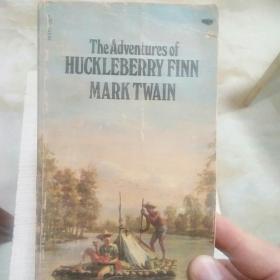
Python机器学习(影印版)
¥ 7 九品
仅1件
山东菏泽
认证卖家担保交易快速发货售后保障
作者Sebastian、Raschka 著
出版社东南大学出版社
出版时间2017-04
版次1
装帧平装
货号a82-4
上书时间2024-12-04
- 店主推荐
- 最新上架
商品详情
- 品相描述:九品
图书标准信息
- 作者 Sebastian、Raschka 著
- 出版社 东南大学出版社
- 出版时间 2017-04
- 版次 1
- ISBN 9787564170776
- 定价 87.00元
- 装帧 平装
- 开本 16开
- 纸张 胶版纸
- 页数 425页
- 字数 553千字
- 正文语种 英语
- 【内容简介】
-
机器学习和预测分析正在改变商业和其他组织的运作模式。
《Python机器学习(影印版)》将带你进入预测分析的世界,通过演示告诉你为什么Python是世界数据科学语言之一。如果你想询问更深入的数据问题,或是想增进、拓展机器学习系统的能力,这本实用的书籍可谓是无价之宝。
《Python机器学习(影印版)》涵盖了包括scikit-learn、Theano和Keras在内的大量功能强大的Python库、操作指南以及从情感分析到神经网络的各色小技巧,很快你就能够解答你个人及组织所面对的那些*重要的问题。 - 【作者简介】
- Sebastian Raschka,a PhD student at Michigan State University, who develops new computational methods in the field of computational biology. He has been ranked as the number one most influential data scientist on GitHub by Analytics Vidhya. He has a yearlong experience in Python programming and he has conducted several seminars on the practical applications of data science and machine learning. Talking and writing about data science, machine learning, and Python really motivated Sebastian to write this book in order to help people develop data-driven solutions without necessarily needing to have a machine learning background. He has also actively contributed to open source projects and methods that he implemented, which are now successfully used in machine learning competitions, such as Kaggle. In his free time, he works on models for sports predictions, and if he is not in front of the computer, he enjoys playing sports.
- 【目录】
-
Preface
Chapter 1: Givin Computers the Ability to Learn from Data
Building intelligent machines to transform data into knowledge
The three different types of machine learning
Making predictions about the future with supervised learning
Classification for predicting class labels
Regression for predicting continuous outcomes
Solving interactive problems with reinforcement learning
Discovering hidden structures with unsupervised learning
Finding subgroups with clustering
Dimensionality reduction for data compression
An introduction to the basic terminology and notations
A roadmap for building machine learning systems
Preprocessing-getting data into shape
Training and selecting a predictive model
Evaluating models and predicting unseen data instances
Using Python for machine learning
Installing Python packages
Summary
Chapter 2: Training Machine Learning Algorithms
for Classification
Artificial neurons-a brief glimpse into the early history
of machine learning
Implementing a perceptron learning algorithm in Python
Training a perceptron model on the Iris dataset
Adaptive linear neurons and the convergence of learning
Minimizing cost functions with gradient descent
Implementing an Adaptive Linear Neuron in Python
Large scale machine learning and stochastic gradient descent
Summary
Chapter 3: A Tour of Machine Learning Classifiers Using
Scikit-learn
Choosing a classification algorithm
First steps with scikit-learn
Training a perceptron via scikit-learn
Modeling class probabilities via logistic regression
Logistic regression intuition and conditional probabilities
Learning the weights of the logistic cost function
Training a logistic regression model with scikit-learn
Tackling overfitting via regularization
Maximum margin classification with support vector machines
Maximum margin intuition
Dealing with the nonlinearly separablecase using slack variables
Alternative implementations in scikit-learn
Solving nonlinear problems using a kernel SMM
Using the kernel trick to find separating hyperplanes in higher
dimensional space
Decision tree learning
Maximizing information gain-getting the most bang for the buck
Building a decision tree
Combining weak to strong learners via random forests
K-nearest neighbors-a lazy learning algorithm
Summary
Chapter 4: Building Good Training Sets-Data Preprocessing
Dealing with missing data
Eliminating samples or features with missing values
Imputing missing values
Understanding the scikit-learn estimator API
Handling categorical data
Mapping ordinal features
Encoding class labels
Performing one-hot encoding on nominal features
Partitioning a dataset in training and test sets
Bringing features onto the same scale
Selecting meaningful features
Sparse solutions with L1 regularization
Sequential feature selection algorithms
Assessing feature importance with random forests
Summary
Chapter 5: Com~ Data via Di~ Reduction
Unsupervised dimensionality reduction via principal
component analysis
Total and explained variance
Feature transformation
Principal component analysis in scikit-learn
Supervised data compression via linear discriminant analysis
Computing the scatter matrices
Selecting linear discriminants for the new feature subspace
Projecting samples onto the new feature space
LDA via scikit-learn
Using kernel principal component analysis for nonlinear mappings
Kernel functions and the kernel trick
Implementing a kernel principal component analysis in Python
Example 1-separating half-moon shapes
Example 2-separating concentric circles
Projecting new data points
Kernel principal component analysis in scikit-learn
Summary
Chapter 6: Learning Best Practices for Model Evaluation
and Hyperparameter Tuni~
Streamlining workflows with pipelines
Loading the Breast Cancer Wisconsin dataset
Combining transformers and estimators in a pipeline
Using k-fold cross-validation to assess model performance
The holdout method
K-fold cross-validation
Debugging algorithms with learning and validation curves
Diagnosing bias and variance problems with learning curves
Addressing overfitting and underfitting with validation curves
Fine-tuning machine learning models via grid search
Tuning hyperparameters via grid search
Algorithm selection with nested cross-validation
Looking at different performance evaluation metrics
Reading a confusion matrix
Optimizing the precision and recall of a classification model
Plotting a receiver operating characteristic
The scoring metrics for multiclass classification
Summary
Chapter 7: Combining Different Models for Ensemble Learning
Learning with ensembles
Implementing a simple majority vote classifier
Combining different algorithms for classification with majority vote
Evaluating and tuning the ensemble classifier
Bagging-building an ensemble of classifiers from
bootstrap samples
Leveraging weak learners via adaptive boosting
Summary
Chapter 8: Applying Machine Learning to Sentiment Analysis
Obtaining the IMDb movie review dataset
Introducing the bag-of-words model
Transforming words into feature vectors
Assessing word relevancy via term frequency-inverse
document frequency
Cleaning text data
Processing documents into tokens
Training a logistic regression model for document classification
Working with bigger data-online algorithms and
out-of-core learning
Summary
Chapter 9: Embedding a Machine Learning Model into
a Web Application
Serializing fitted scikit-learn estimators
Setting up a SQLite database for data storage
Developing a web application with Flask
Our first Flask web application
Form validation and rendering
Turning the movie classifier into a web application
Deploying the web application to a public sewer
Updating the movie review classifier
Summary
Chapter 10: Predicting Continuous Target Variables
with R_Re_gression Analysis
Introducing a simple linear regression model
Exploring the Housing Dataset
Visualizing the important characteristics of a dataset
Implementing an ordinary least squares linear regression model
Solving regression for regression parameters with gradient descent
Estimating the coefficient of a regression model via scikit-learn
Fitting a robust regression model using RANSAC
Evaluating the performance of linear regression models
Using regularized methods for regression
Turning a linear regression model into a curve-polynomial regression
Modeling nonlinear relationships in the Housing Dataset
Dealing with nonlinear relationships using random forests
Decision tree regression
Random forest regression
Summary
Chapter 11: Working with Unlabeled Data- Cluste~
Grouping objects by similarity using k-means
K-means++
Hard versus soft clustering
Using the elbow method to find the optimal number of clusters
Quantifying the quality of clustering via silhouette plots
Organizing clusters as a hierarchical tree
Performing hierarchical clustering on a distance matrix
Attaching dendrograms to a heat map
Applying agglomerative clustering via scikit-learn
Locating regions of high density via DBSCAN
Summary
Chapter 12: Training Artificial Neural Networks for Image Recognition
Modeling complex functions with artificial neural networks
Single-layer neural network recap
Introducing the multi-layer neural network architecture
Activating a neural network via forward propagation
Classifying handwritten digits
Obtaining the MNIST dataset
Implementing a multi-layer perceptron
Training an artificial neural network
Computing the logistic cost function
Training neural networks via backpropagation
Developing your intuition for backpropagation
Debugging neural networks with gradient checking
Convergence in neural networks
Other neural network architectures
Convolutional Neural Networks
Recurrent Neural Networks
A few last words about neural network implementation
Summary
Chapter 13: Parallelizing Neural Network Training with Theano
Building, compiling, and running expressions with Theano
What is Theano?
First steps with Theano
Configuring Theano
Working with array structures
Wrapping things up-a linear regression example
Choosing activation functions for feedforward neural networks
Logistic function recap
Estimating probabilities in multi-class classification via the
softmax function
Broadening the output spectrum by using a hyperbolic tangent
Training neural networks efficiently using Keras
Summary
Index
点击展开
点击收起
— 没有更多了 —


















以下为对购买帮助不大的评价